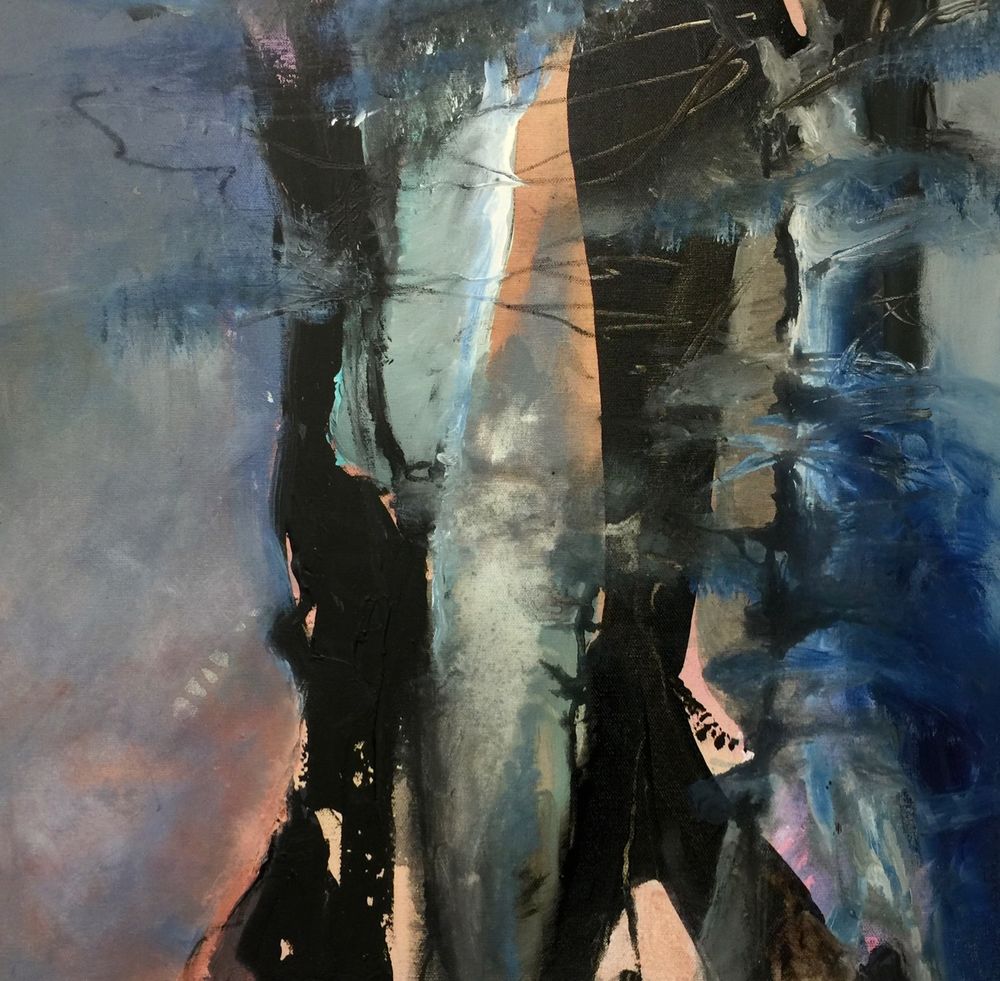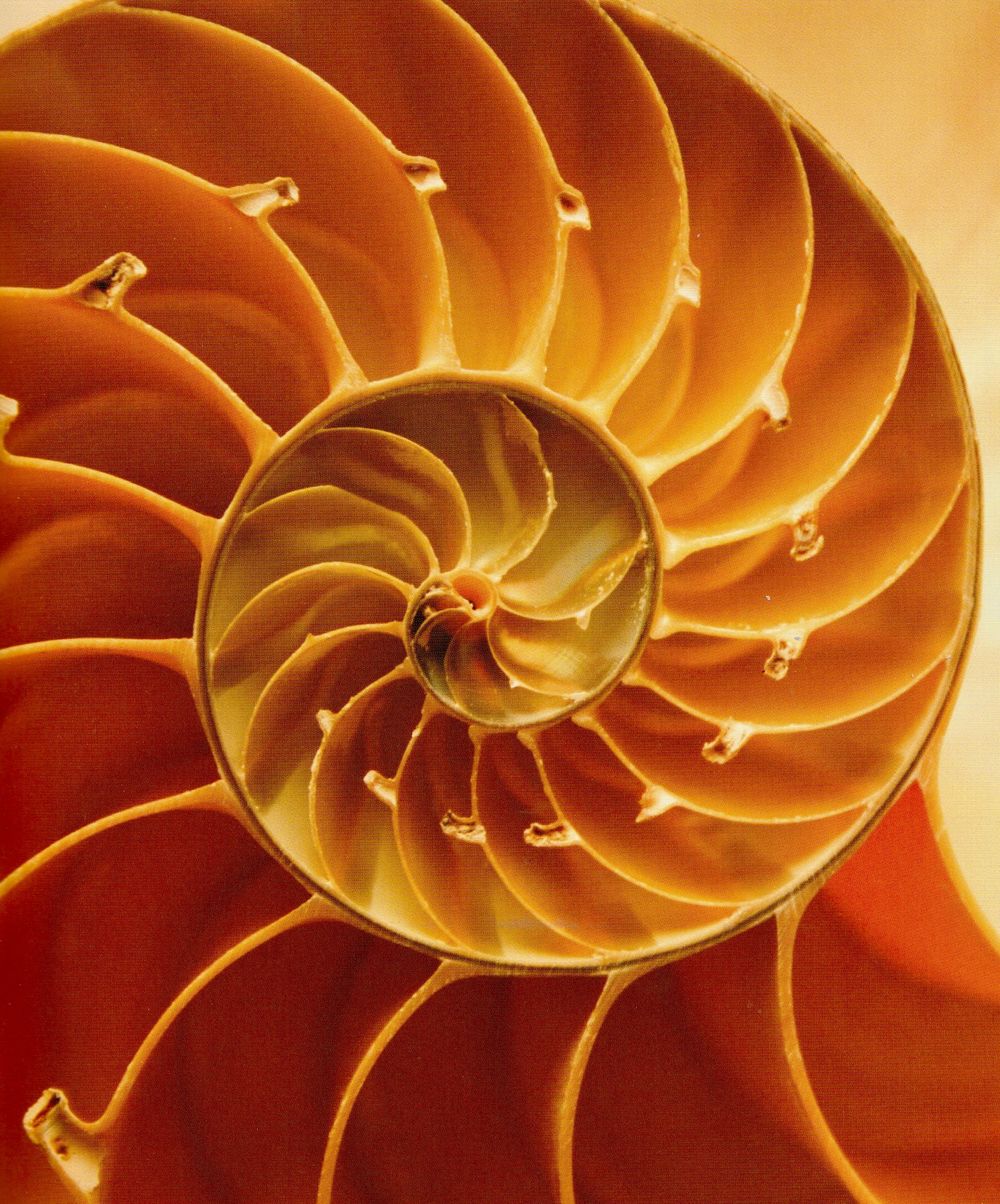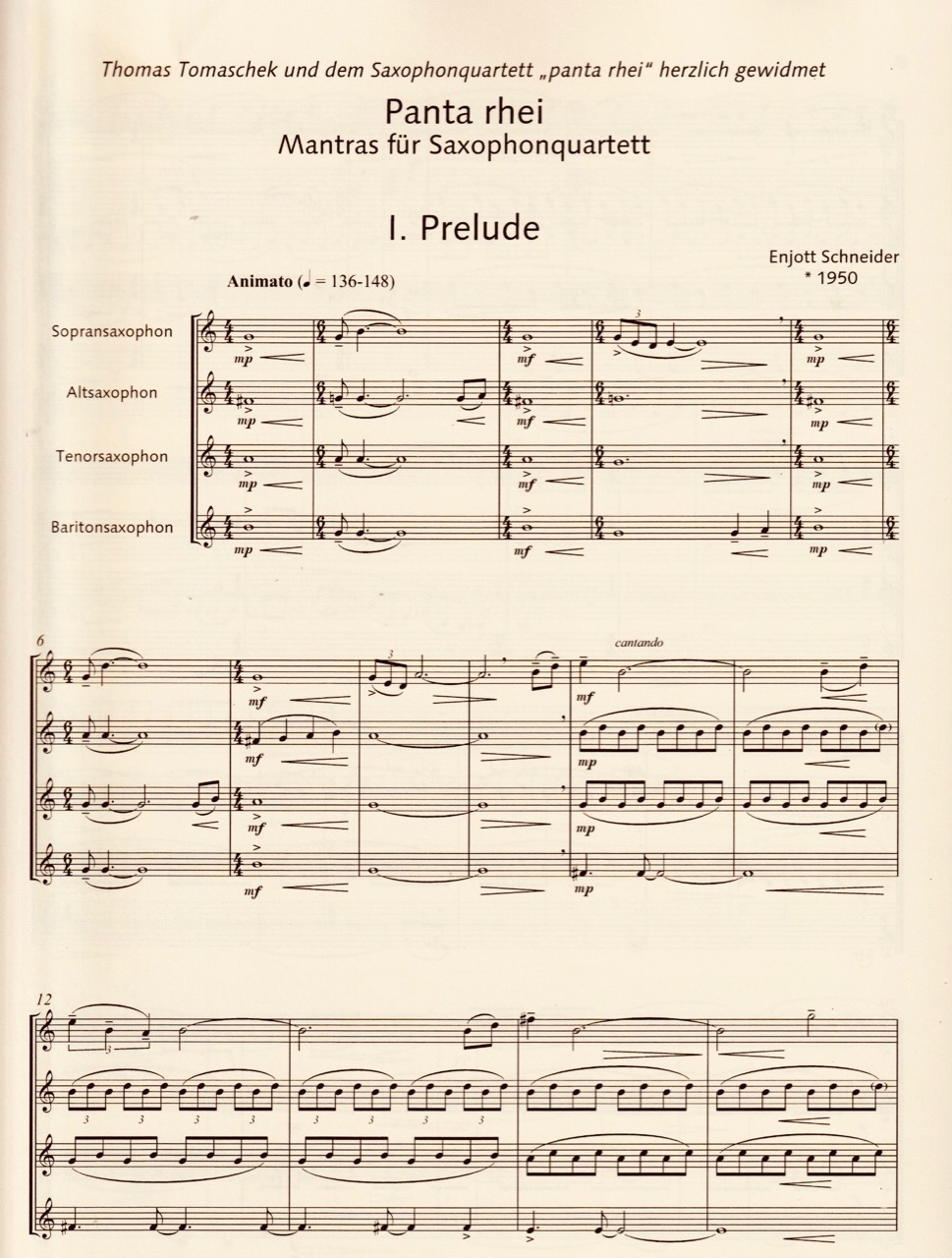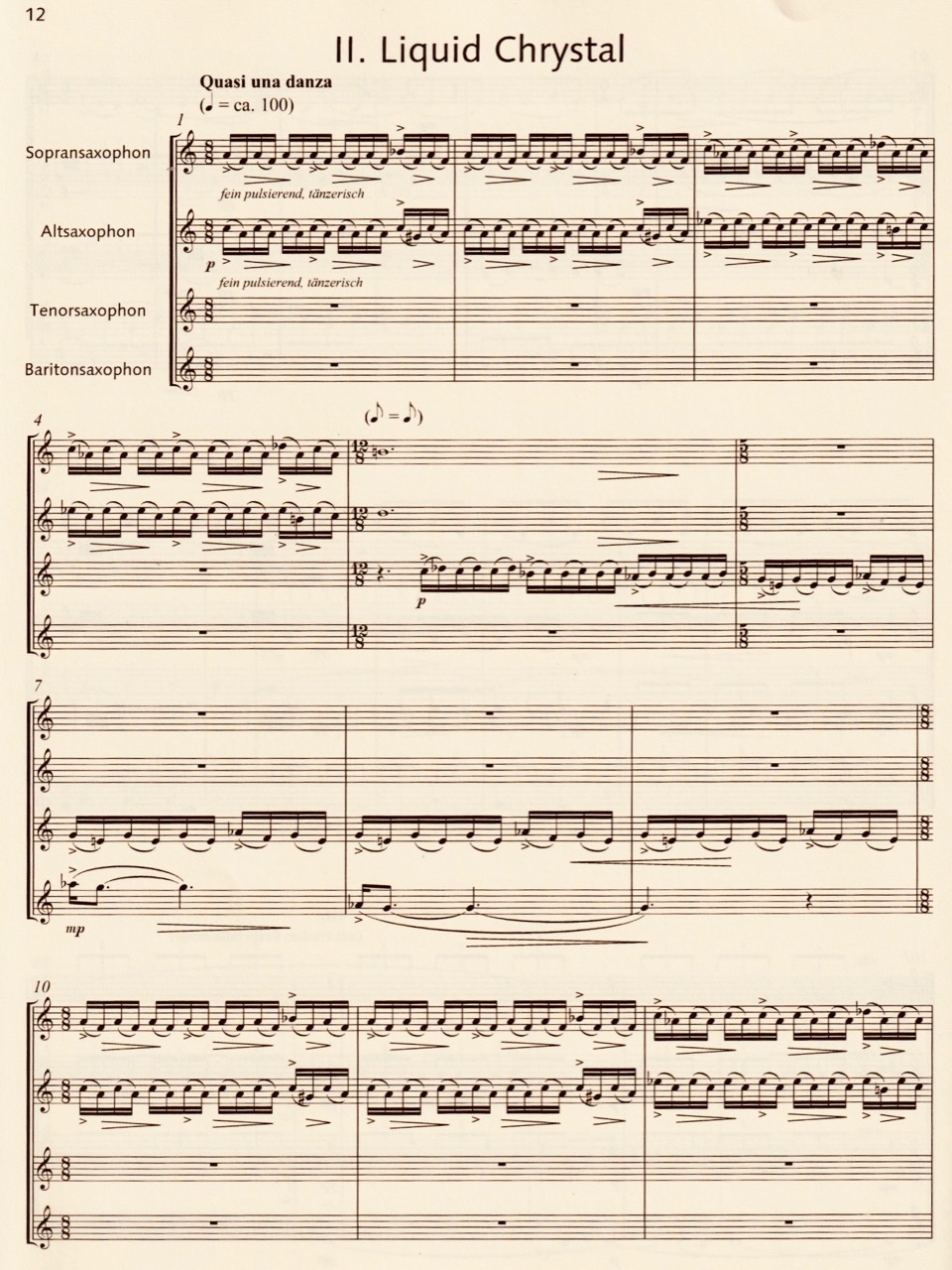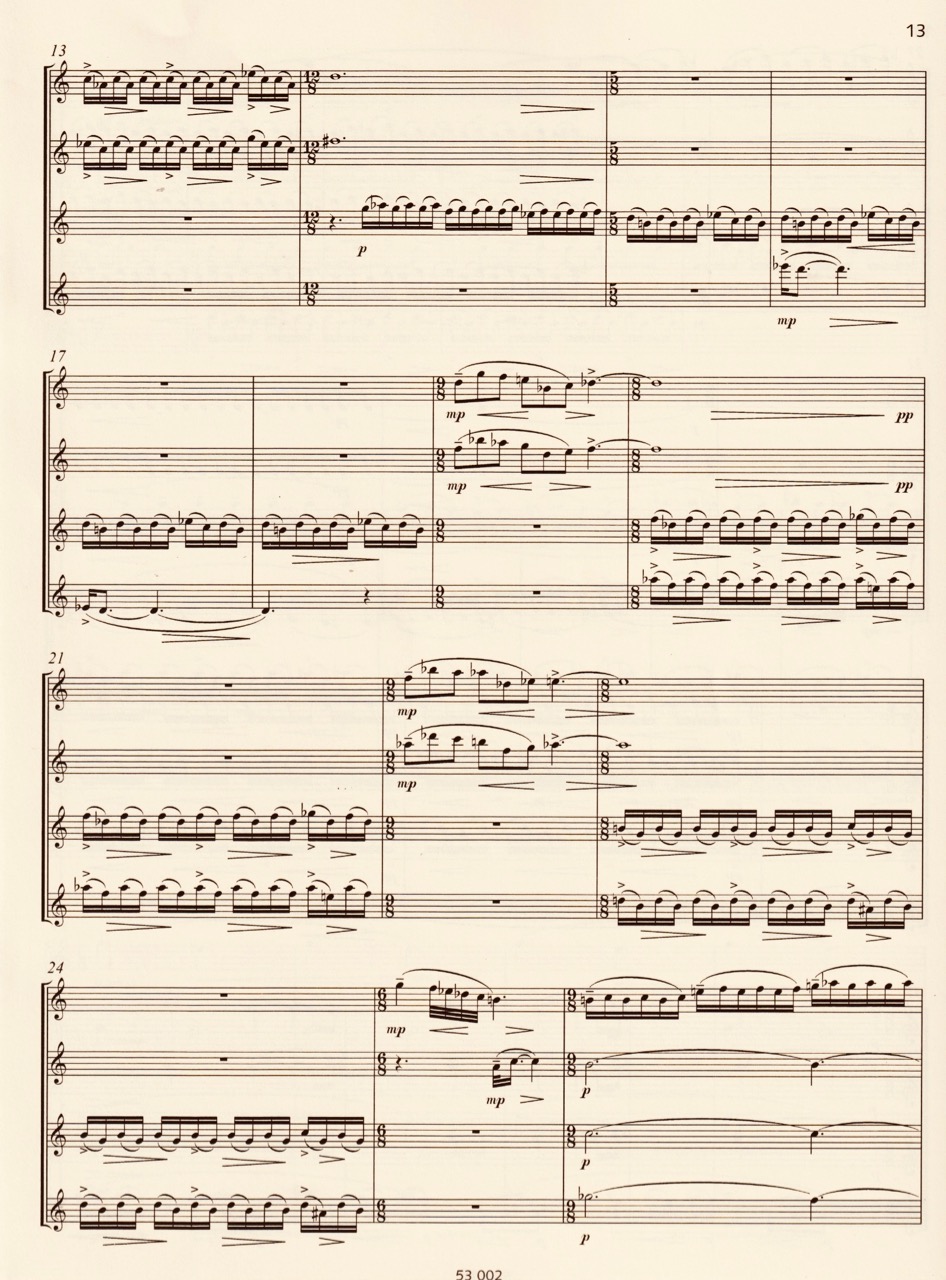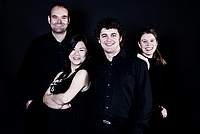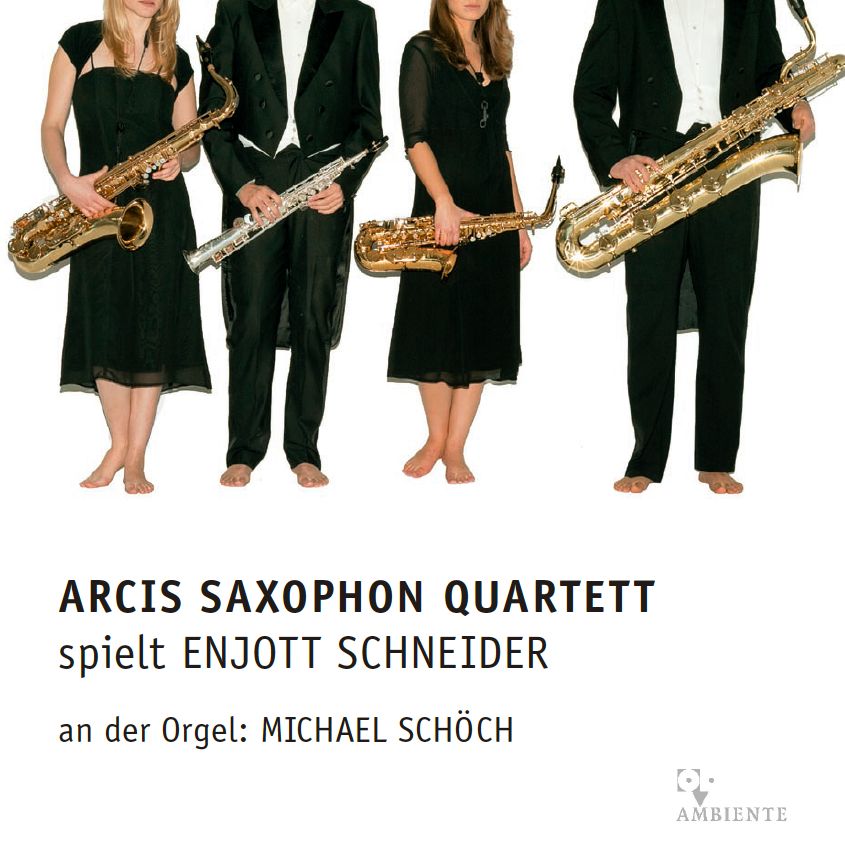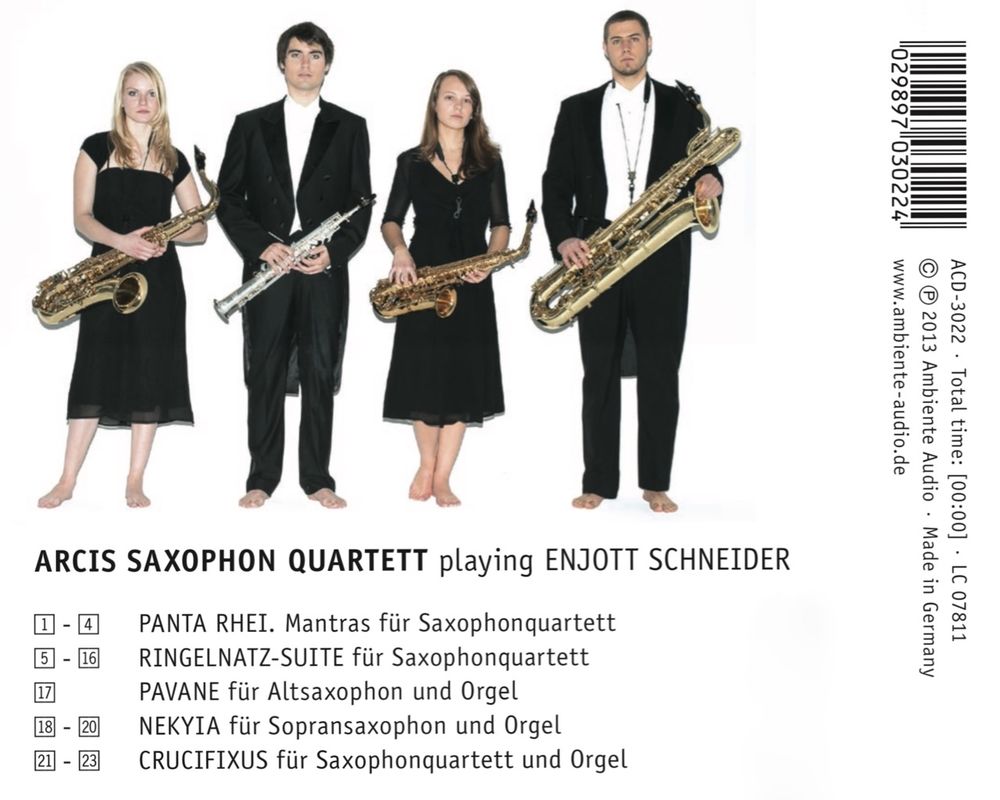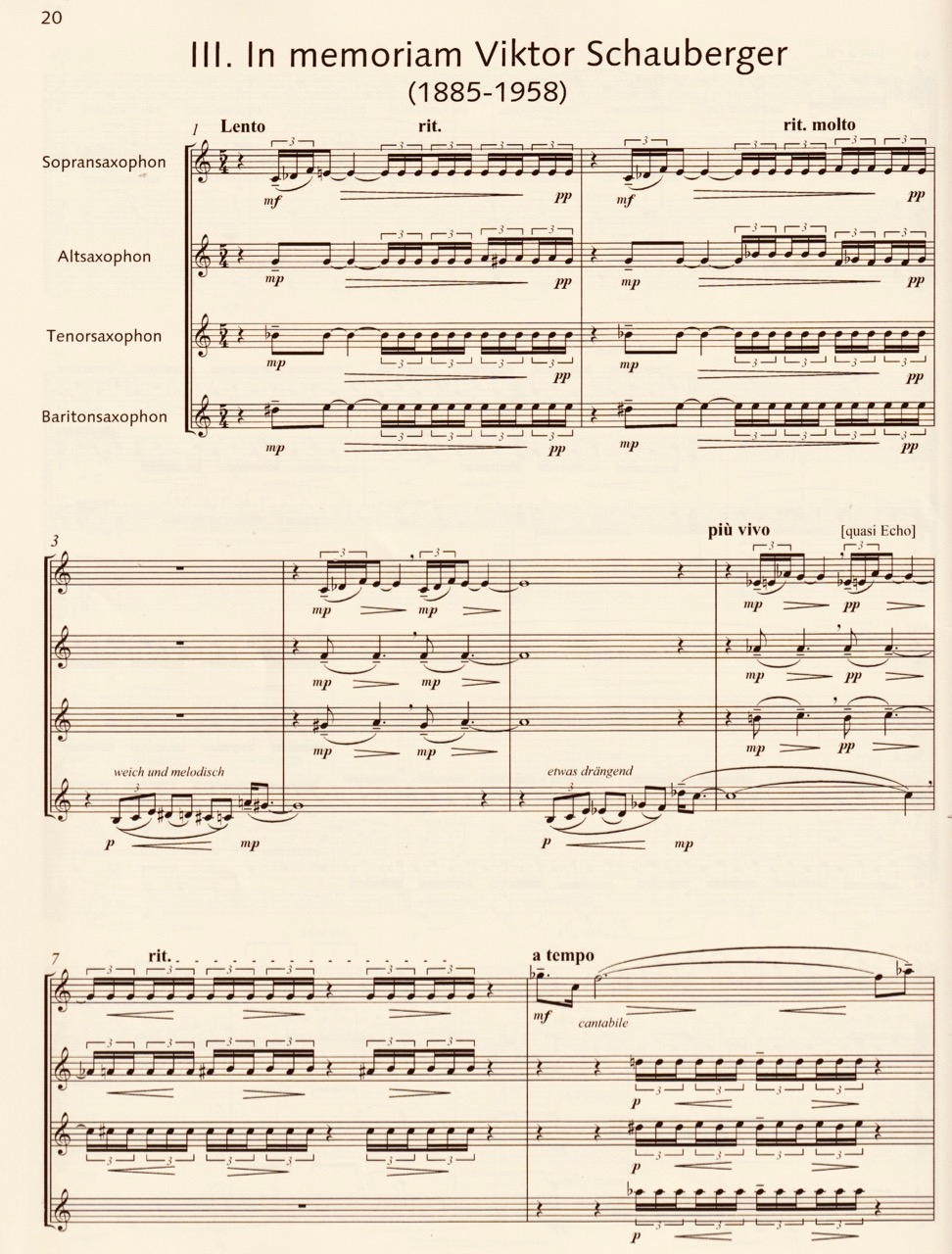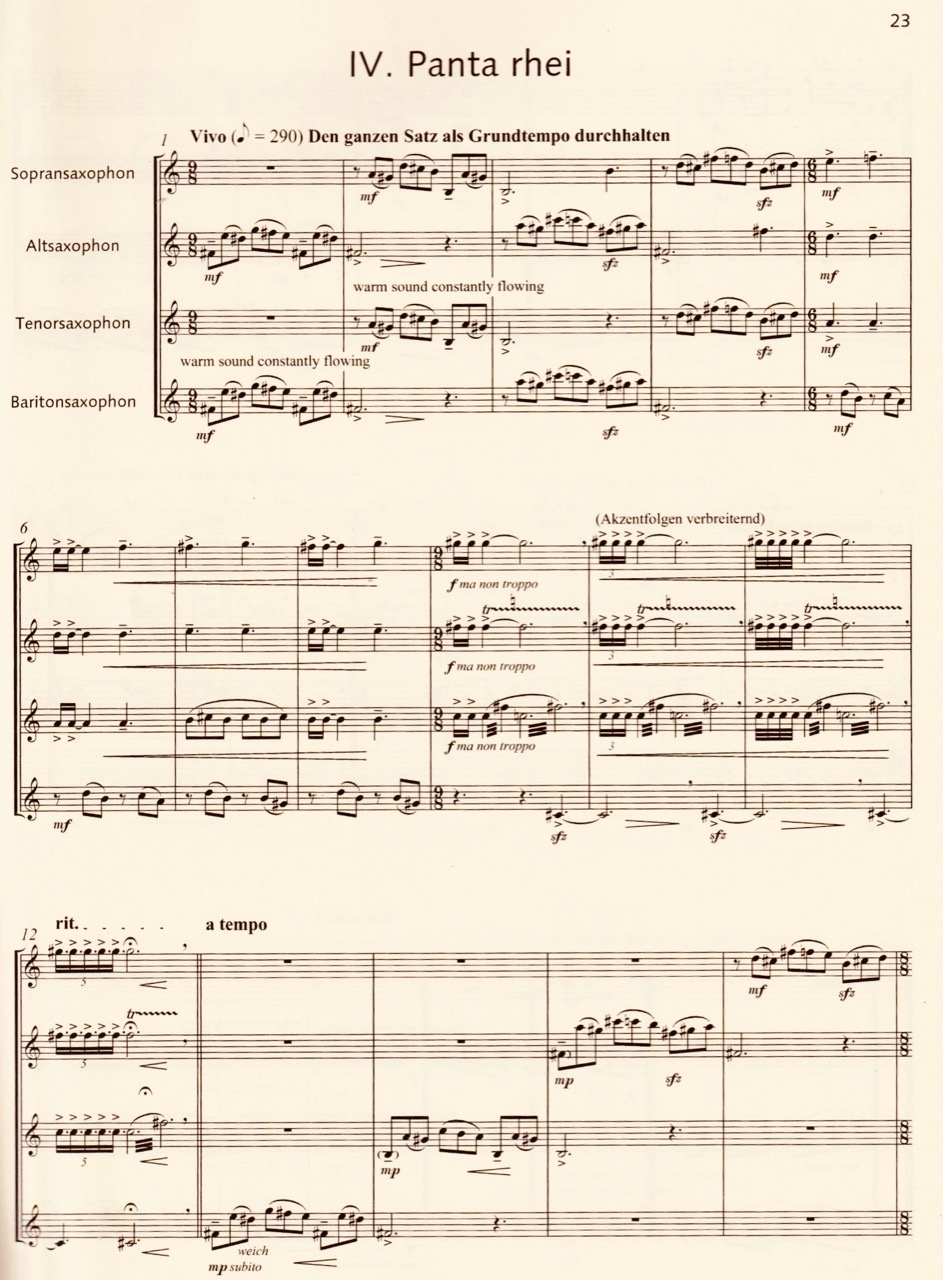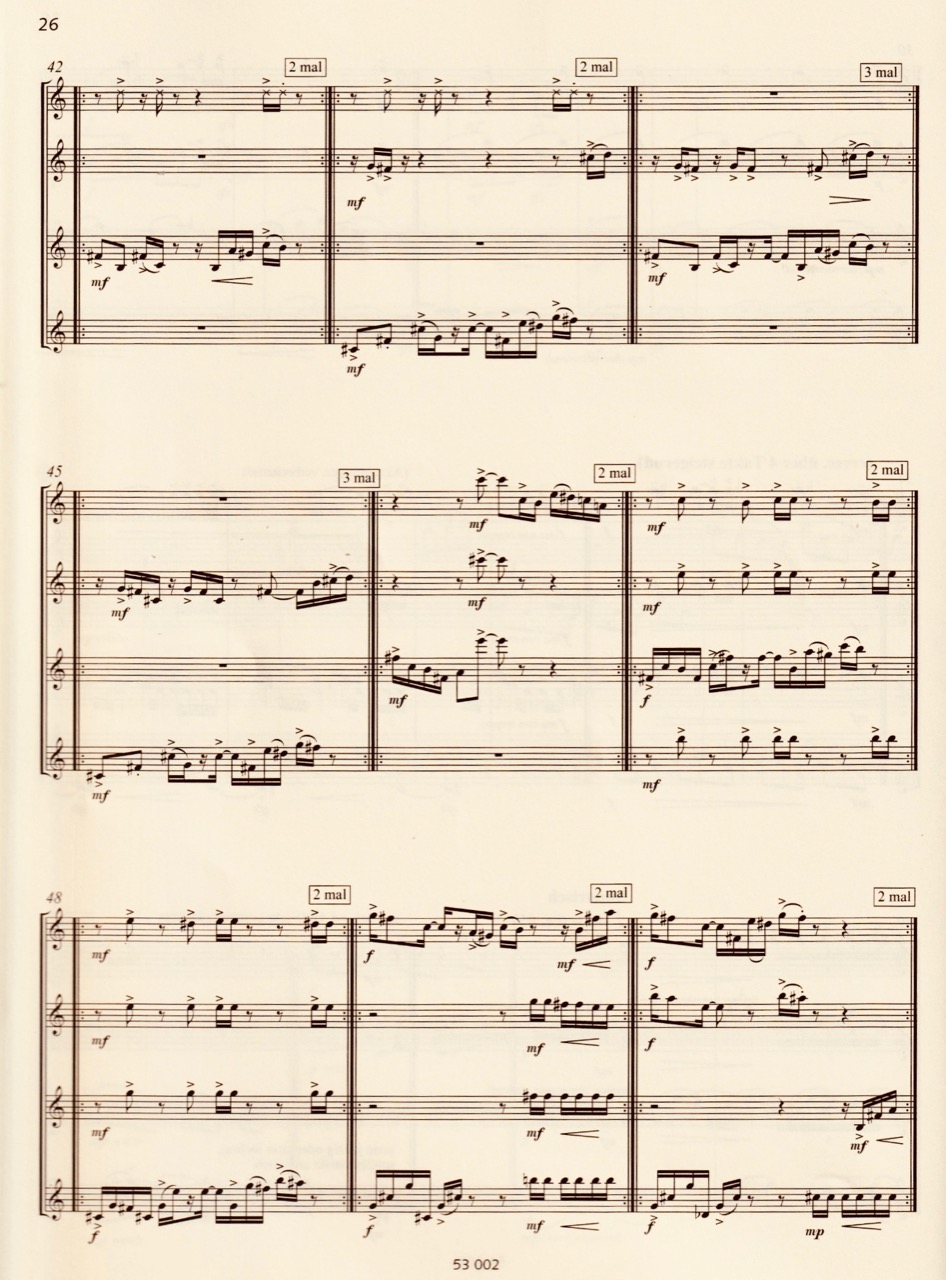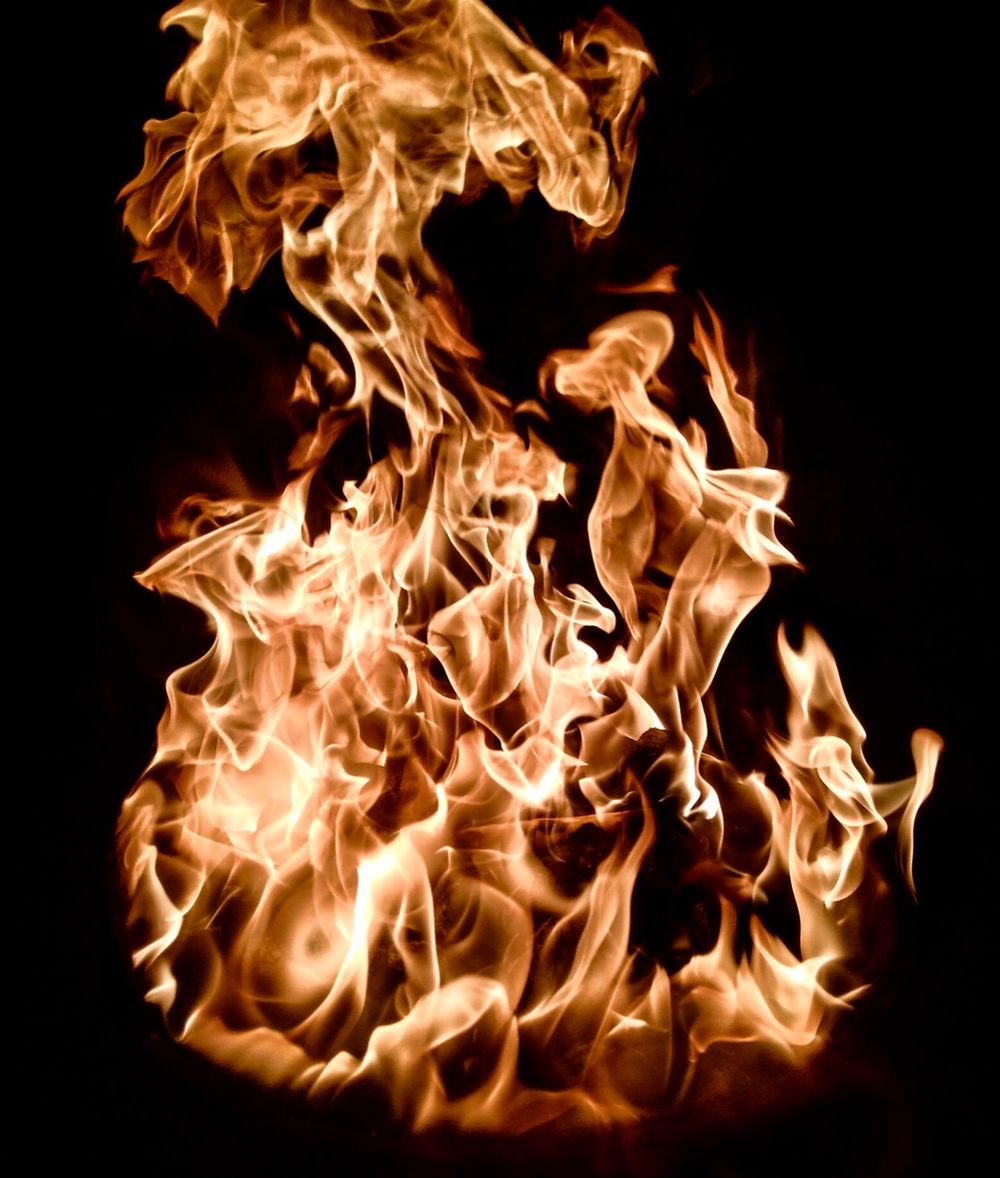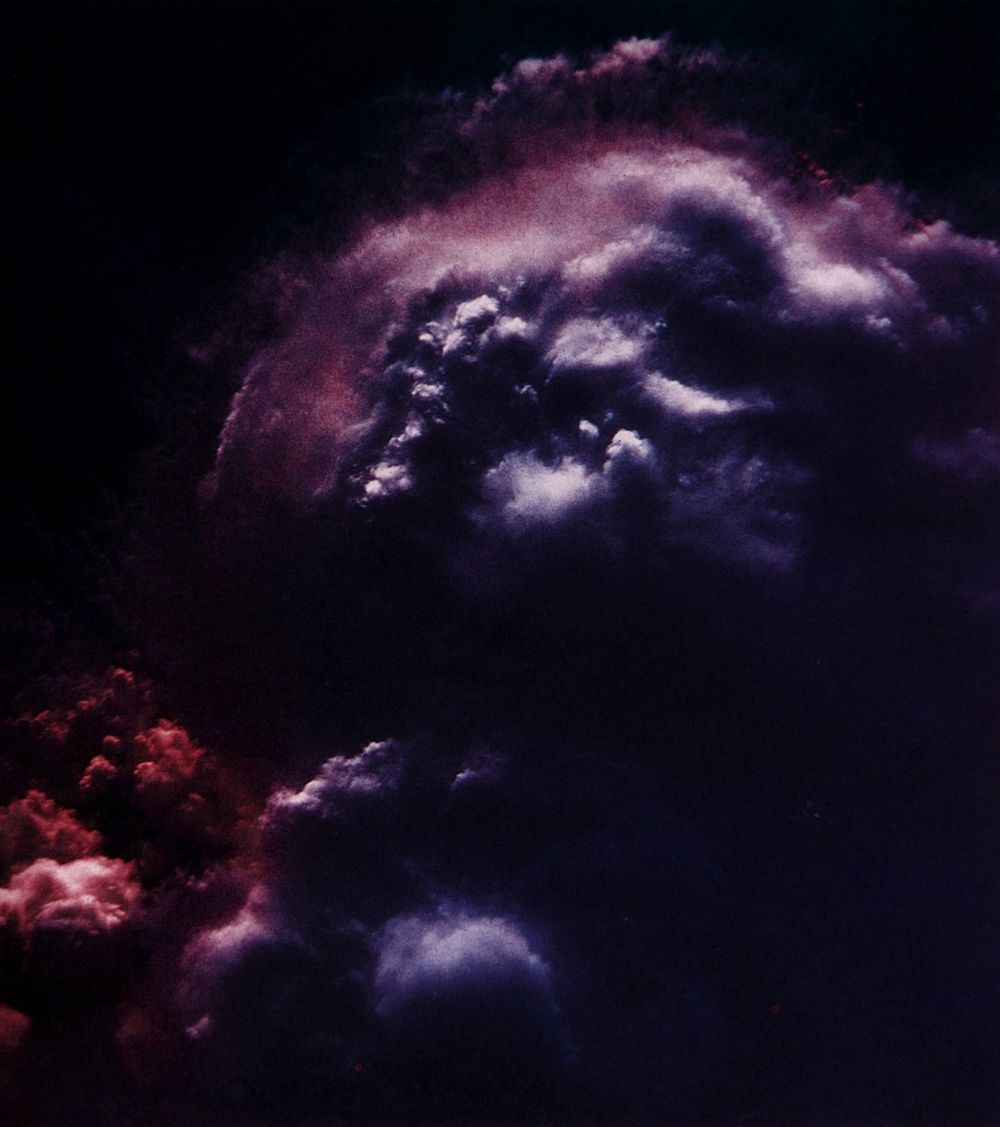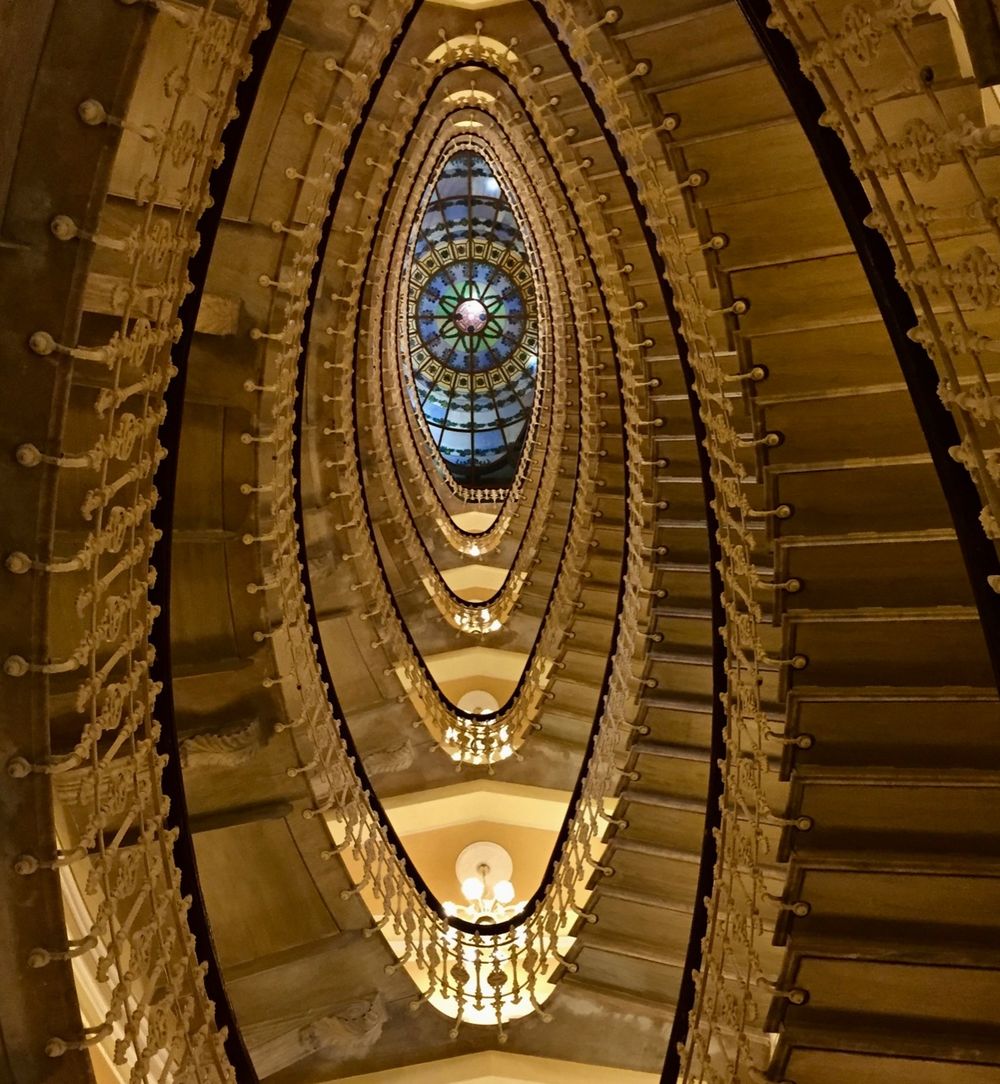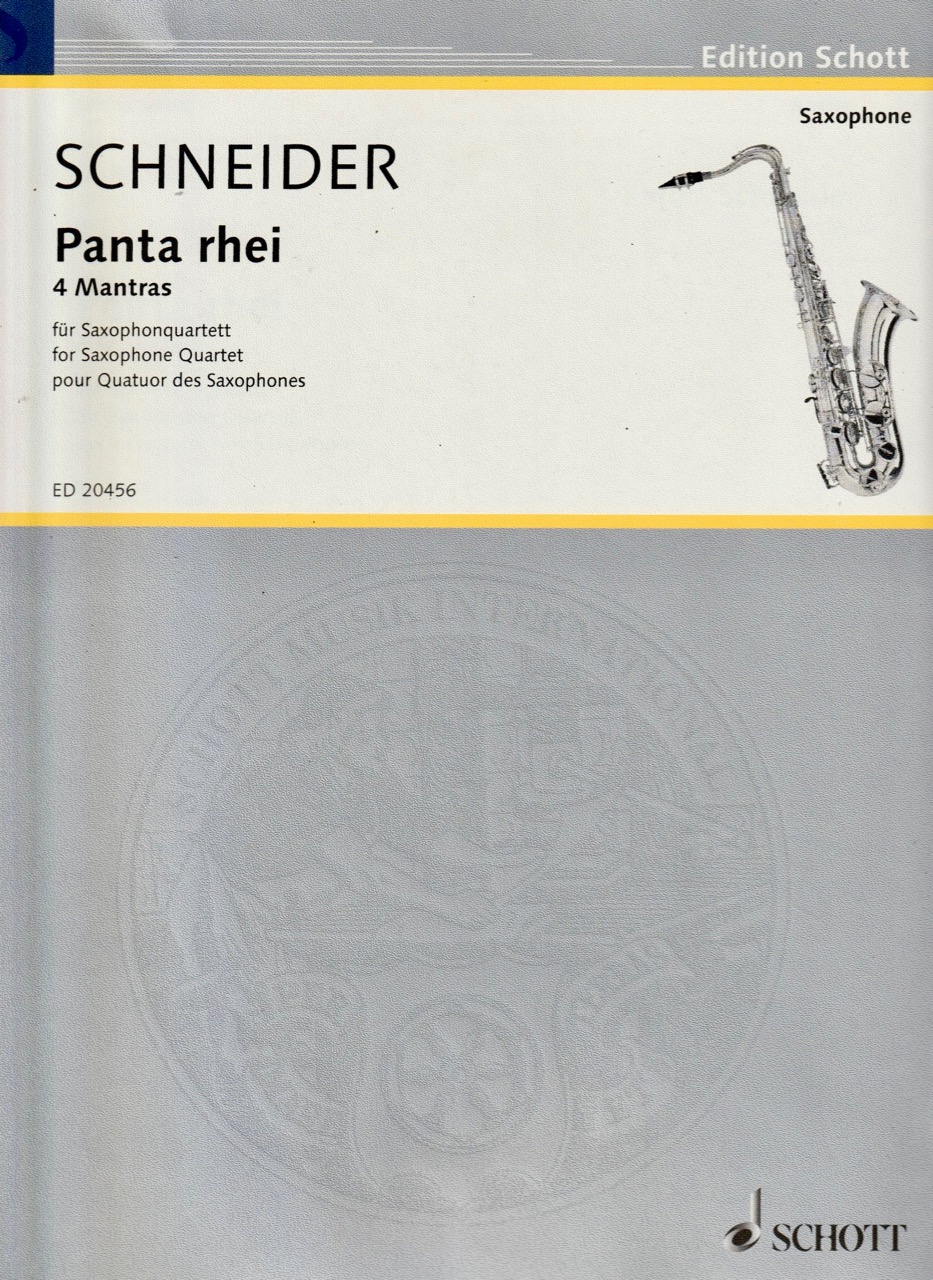
Category: Chamber Music
PANTA RHEI ("Everything flows") is the quintessence of the ancient philosopher Heraclitus and inspired the composition on the one hand to a minimal music or pattern style, on the other hand to the Asian meditation form of the "mantra": in Hinduism and Buddhism sacred sentences, repetition of syllables and words leading to the subconscious. Movement 1 is a flowing preludio, movement 2 is a micro-dance of Liquid Chrystals (the crystals of LCD displays were discovered by Otto Lehmann as early as 1900), movement 3 is a homage to Viktor Schauberger (1885-1958), a pioneering and ecological mastermind of new forms of energy, movement 4 becomes very groovy and powerful: the goal of this composition.
Movements: 1: Prelude (4:20)
2: Liquid Chrystal (3:40)
3: In Memoriam Viktor Schauberger (3:00)
4: Panta Rhei (5:00)
Duration: 16 Minutes
Publisher of notes/sheet music: Schott Music GmbH , 2007
Instrumentation: Saxophone quartet (S/A/T/Bar)
Solo instruments: Saxophon
Introduction: PANTA RHEI ("Everything flows") is the quintessence of the Greek natural philosopher Heraclitus from Ephesus (ca. 540-480 BC), from whom central statements such as "You cannot get into the same river twice" have been preserved, for whom the "eternally changing fire" was a symbol of the life force. "Everything is in motion and change", that was "logos", the law of the world. In an archaic world whose incomprehensibility was attempted to be mastered with magic, taboo, ritual, totem and dance, the early Greek natural philosophers explained natural phenomena without God as the controller of supernatural forces and must therefore be regarded as the forefathers of modern natural sciences.
The four mantras for saxophone quartet were written at the interface between independent thought and archaic ritual. "Mantras" in Hinduism and Buddhism are sacred phrases, core statements, "instruments of thought and speech". They were addressed to the divine as worship and a way of concentration and consist mainly of repetitions of syllables and words. In this sense, each movement in "Panta Rhei" contains a basic motif (above all a basic rhythmic gesture), which is repeated variably and circularly, but not identically, - just in eternal flow.
Dedication: Dedicated to Thomas Tomaschek and the 'Panta Rhei' saxophone quartet
Additional remarks: Explanation of the interpretation:
1: Prelude
The eighth flows with a warm basic tone. The many changes of beat are not to be detectable and the accents discreet and not too hard. The forte parts not too accented and the don't stray from the melody. Be sure the chords are accurate. The vibrato rhythm at the end showed be performed in such a way that a triplet feeling is created.
2: Liquid Chrystal
The fluid crystal was first investigated and explained by Otto Lehmann (1855-1922).He was a discoverer who was ahead of his time and who set the basics for LCD.
Liquid chrystal is rhythmic dance whose tempo and phrasing should constantly flow. The accents and dynamics should not be hard or abrupt but a fluctuating sliding of the music.
3: In Memoriam Viktor Schauberger (1885-1958)
Schauberger was an Austrian forester and scienctist who developed natural sciences. The composition contains a bell like impulse which is varied several times. In this impulse there is a simple, free flowing melody fragment.
4: Panta Rhei
This is the main movement of the piece, full of vitality and strength. The virtuoso eighths bring about a wave-movement whose character should always sound the same no matter on what saxophone it is played.
The middle part is a groovy staccato but should not be jazzy but as a straight rhythm - always positive and impulsive.
World premiere: 06.10.2009, Gasteig München BlackBox
Performers at world premiere: Saxophonquartett PANTA RHEI
Press reviews for world premiere: Press reviews in German language only:
NMZ 11/09 S. 45 Besprechung der Schott-Notenausgabe
'Vier in sich abgeschlossene Sätze. Ausführliches Vorwort und Interpretationsanmerkungen. Eine sehr gelungene, interessante Komposition, die viele Interessenten haben sollte. Trotz der vielen Taktwechsel ist das Zusammenspiel klar und überschaubar. Schwierigkeitsgrad: Mittel- bis Oberstufe. Sehr empfehlenswert auch für Jugend musiziert'. (Frank Klüger)
Schwäbische Zeitung vom 12.6.2009
'Enjott Schneider, Jahrgang 1950, komponierte eigens für das Quartett ein gleichnamiges Stück 'panta rhei' - Mantras für Saxophonquartett. Die antike Erkenntnis panta rhei, alles fließt, lässt an das große Thema Zeit, Vergänglichkeit denken. In minimalistischem Stil und malerischer Gestik setzt Enjott Schneider das Thema in Töne. Das Saxophonquartett ließ die Töne fließen, wässerig zerfließen und strudeln. Der Star des Quartetts war das Sopransaxophon. Nach einem fragenden Trauermotiv siegte das pralle Tönen, mit gegenläufigen Rhythmen, Schenkelklopfen, Jodeln und Jauchzen. Enjott Schneider ist wie Micharl Nyman, Jahrgang 1944, von dem '24hours Saxophone Quartet' tz Gehör kam, durch Filmmusik bekannt.
Records:
Performers on recording: The audio sample contains a performance by the Arcis saxophone quartet
Concert recording of July 2010
